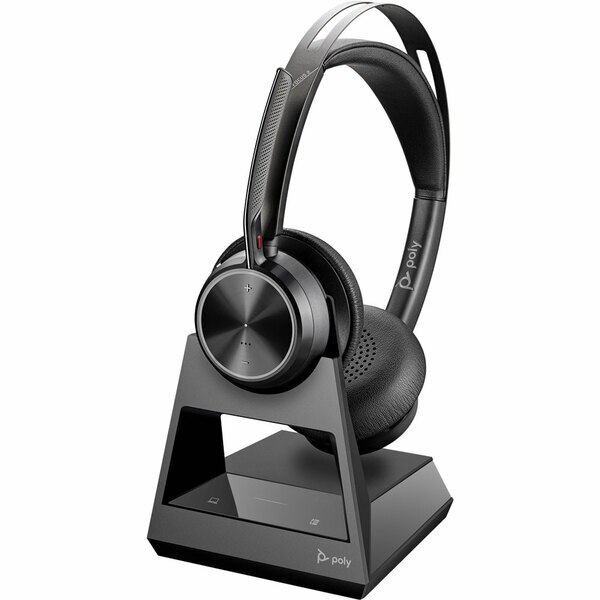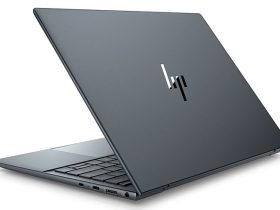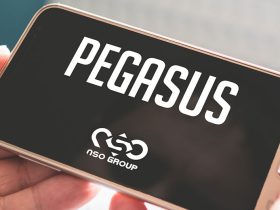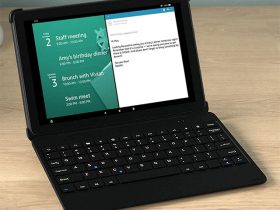ARM and x86 have been doing battle for the final decade. ARM tried to maneuver into the server market and failed; Intel, which carries many of the x86 burden, tried to maneuver on cellphones and failed. The battle for tablets is ongoing, with ARM within the lead, and the battle for notebooks continues with Intel primarily within the lead.
Up till not too long ago, Qualcomm has primarily been the standard-bearer for ARM, however that may change if Nvidia’s try to purchase ARM is profitable; which is probably going. Nvidia appears to be extra concerned about servers than smartphones in the mean time. Nonetheless, they do have their eye on PCs, the place battle with Qualcomm is prone to emerge.
Nevertheless, that is platform battle, and ARM is at the moment extra related with builders than x86. This combat is primarily a battle between enterprise plans, with ARM heavy on licensing and x86 extra centered on gross sales.
Let’s speak about how this battle is prone to play out, as a result of the result is way from determined and the winner could find yourself with the entire chips. We’ll then shut with my product of the week: a brand new headset from Plantronics that could be simply what the physician ordered on your subsequent Zoom name.
Outdated Faculty vs. New Faculty
The market likes range in distributors, nevertheless it isn’t a fan of range in architectures as a result of that creates choice threat.
OEMs and IT organizations spend, collectively, billions of {dollars} on know-how, and the extra viable varieties of know-how out there, the extra seemingly one in every of these giant, influential entities are prone to guess flawed.
Ideally, and this was initially constructed into the x86 plan, they’d like two redundant distributors who’re plug-compatible to allow them to change between distributors later within the manufacturing course of and mitigate provide threat.
The x86 at one time had an enormous benefit as a result of when IBM initially went to Intel for his or her x86 know-how, they demanded that Intel license to another person, which turned out to be AMD, to guarantee aggressive pricing and backup within the face of a chip scarcity.
Nevertheless, Intel negotiated socket compatibility away to lock up the platforms they constructed, not realizing this is able to weaken x86 strategically.
So, Intel moved away from what the market needed to stop AMD (which had been rising) from gaining extra market share. However by doing so, they strategically weakened x86. Or, put a unique means, simply because the computing market was transferring to extra of a licensing and compatibility mannequin, Intel went in the wrong way, placing its know-how and the corporate at larger threat.
In a means, simply as Microsoft’s errors within the Nineteen Nineties largely drove Linux, ARM has more and more been pushed by Intel’s errors in that very same decade. Microsoft responded to their menace by turning into extra open and shutting the hole regarding Linux, and it has even embraced that competing platform. Redmond’s protection shifted from one in every of energy and power to one in every of assist and development, and immediately Linux is each viable and never a lot of a menace to Microsoft.
The market likes the open-source collaborative mannequin, which surrounds ARM, and it likes the broader alternative of ARM distributors despite the fact that Qualcomm is arguably dominant, very similar to Intel is in x86.
This construction permits the ARM ecosystem to behave extra like a cohesive unit in opposition to x86. Intel, AMD, and VIA hardly ever act in live performance and usually tend to ignore or place themselves in opposition to one another than they’re the broader menace. It typically appears that the x86 faction infighting retains all of them much less centered on the extra vital menace from ARM.
This new competitors is much less a battle between applied sciences and extra a battle between enterprise practices, with ARM higher addressing the said wants of OEMs and cloud suppliers who get pleasure from each alternative and deeper engagement with the businesses that construct the applied sciences they resell and use.
Energy Steadiness
When it comes to the stability of energy, the 2 sides are comparatively weighted, with x86 dominant in PCs and servers, which have a tendency to hold fairly excessive margins; and ARM dominant in cellphones, tablets, and extra seemingly be embedded in home equipment and IoT units.
This aggressive dynamic provides ARM a powerful lead within the higher-volume classes and a bonus in economies of scale. However x86’s lock on PCs and servers is way more durable to interrupt, which offsets considerably a possible price benefit that will guarantee ARM’s eventual victory.
Additionally, x86 has usually extra efficiency headroom than ARM, blunting using digital machines as a leveling agent, which might in any other case present a extra simple path to aggressive displacement. However it’s far simpler to extend efficiency whereas holding down power use than it’s to cut back power use whereas sustaining efficiency.
As well as, Intel collapsed its Developer Discussion board. In distinction, ARM occasions for builders continued shifting developer assist between the 2 platforms; weakening x86 considerably (they’re correcting this, however lots of the builders have already switched).
On prime of that, with Apple switching to ARM and Nvidia shopping for ARM, two of probably the most influential firms in tech have successfully switched sides. Nvidia additionally has a major beachhead in servers with its focused GPU options centered on AI and analytics hundreds offering an onramp for its coming blended ARM server options.
Fortuitously for Intel, Apple doesn’t associate nicely with anybody, which limits the corporate’s profit to the ARM ecosystem past optics — however optics might be very highly effective right here.
General, the benefit has shifted to ARM long run. If the ARM suppliers coordinate, present a seamless option to transfer between one another (the equal of socket compatibility), and cut back assaults in opposition to one another, this could possibly be their recreation to lose. They aren’t there but.
If the x86 suppliers can mix to defend their shared platform, transfer to extra of an open supply and licensing mannequin that the market seems to desire, they may strengthen their maintain on their segments and be in a much better place to defend their positions. That isn’t taking place both.
So that is nonetheless anybody’s recreation to win or lose. However the momentum, with the Apple and Nvidia strikes, is clearly on the facet of ARM in the mean time.
Wrapping Up
We’re witnessing a battle royal between two {hardware} platforms: x86 and ARM.
Assets and capabilities had been comparatively matched till Apple and Nvidia successfully switched sides from x86 to ARM. As a consequence, ARM has the benefit; however a scarcity of cooperation and coordination hurts each side of this battle, assuring neither can go to battle at its full power.
Intel’s efforts to re-establish its reference to builders will take time, primarily if these builders see x86 as a declining platform. Apple could also be extra of a legal responsibility on the ARM facet than an asset, given its closed nature.
The result of this combat, at the least this decade, seemingly pivots on Nvidia’s execution greater than some other participant as a result of Intel is constrained by the errors it made up to now; and it’s the acquisition of ARM by Nvidia that doubtlessly has probably the most vital influence on this battle close to time period.
However the market desires one know-how to emerge; and the open nature of ARM, which dovetails with the open initiatives of software program and cloud suppliers, provides it a bonus that Intel and x86 have but to handle totally.
IBM and Microsoft have showcased the trail to victory, or at the least a stalemate, for Intel. However shifting from Intel’s present {hardware} mannequin to at least one that higher mirrors Qualcomm’s may be past Intel’s will to alter.
As with most battles, whoever wins it will seemingly be the one which finest assesses the battlefield and may place its assets, together with companions and licensees, most affectively in opposition to their aggressive menace. I count on this might be primarily determined inside 5 years.
The Plantronics Voyager Focus 2
For many people it appears like the brand new regular we tailored in the course of the pandemic might be both everlasting or part-time, as we both proceed working at house completely or cut up time between our house and the corporate workplaces. This end result signifies that a lot of our assembly time will nonetheless be performed with merchandise like Groups and Zoom.
This additionally implies that having a terrific headset stays important, and the brand new Poly Voyager Focus 2 could also be that headset.

Poly Voyager Focus 2
It needs to be famous that there’s a particular Groups model of this headset that has distinctive Groups capabilities however nonetheless will work with different providers. The non-Groups model will work with Groups, however you received’t get these particular capabilities permitting you to make use of the headset to manage some Groups capabilities reminiscent of choosing up a message, as an illustration.
The design is on-ear which is commonly most well-liked in workplaces; versus in-ear which is favored when cellular; or over-ear which is advantageous on airplanes or locations which are noisier than most. On-ear headsets are typically extra comfy than in-ear for lengthy intervals and aren’t as isolating as over-ear designs.
Battery life is estimated to be 19 hours, so it would deal with all-day use with out recharging. The headset might be charged in its cradle or by plugging in a micro USB cable.
This unit has probably the most superior lively noise cancellation I’ve but seen, each for inbound and outbound sound, so when utilizing this at house, ambient noise out of your children or pets needs to be principally, if not fully, blocked out. Poly estimates that this headset is twice as efficient at blocking out ambient noise inbound and thrice as efficient with ambient noise outbound (although your home may appear quiet; it’s not).
Like most headphones, this has controls for music; and like different Poly merchandise, it offers a visual lighted indicator telling others you’re on a name.
It isn’t an affordable date at $329, however it would join you to work, so going low cost is probably not a smart follow.
Given that is one of the best communications-focused headphone I’ve but examined, the Poly Voyager Focus 2 is my product of the week.
,







